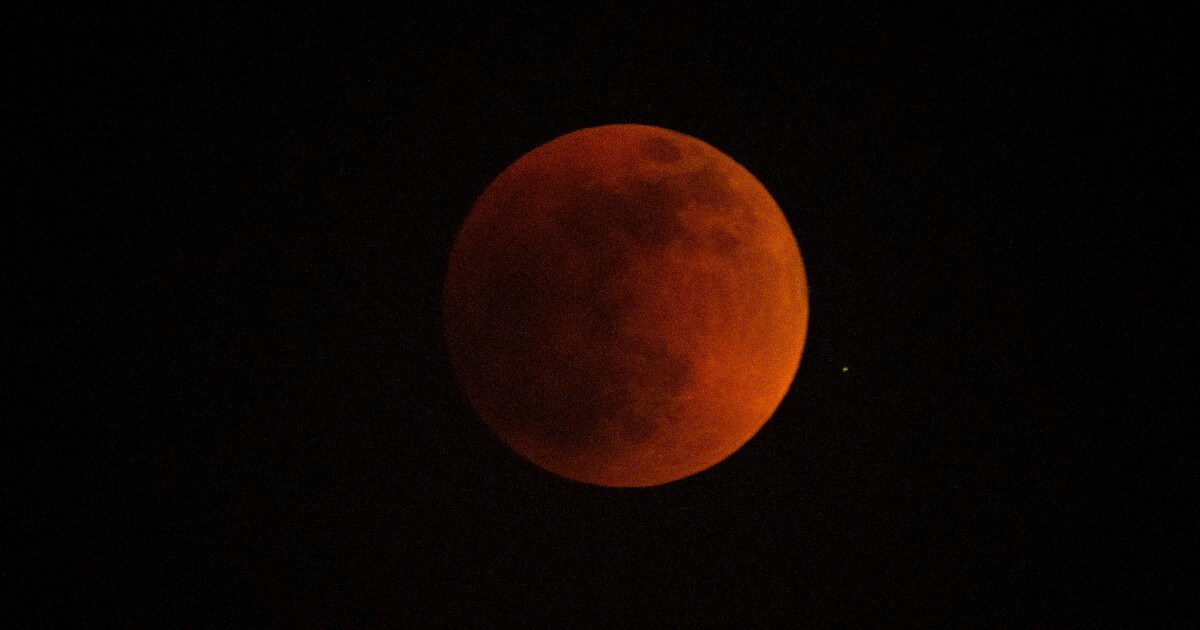

A full lunar eclipse will take place on Election Day next week and will feature a blood moon, marking the last lunar eclipse for three years and the first ever to fall during the midterm elections.
The total eclipse will be the second major lunar event seen in the United States this year, after the first happened in May, and will appear in the early morning of Nov. 8. Lunar eclipses normally occur once every 1 1/2 years on average, but the next will not occur until 2025, scientists have predicted.
SEE IT: PICTURE SHOWS THE SUN ‘SMILING,’ BUT EXPERTS WARN IT COULD HAVE REAL CONSEQUENCES
“A total lunar eclipse is on the way to provide a little celestial magic early on the morning of Nov. 8,” NASA said in a video. “The eclipse will be visible to viewers in North America, the Pacific region, Australia, and eastern Asia, anywhere where the moon is above the horizon.”
There are plenty of reasons to watch the skies in November: a total lunar eclipse, the Leonid meteors, and chances to see Mars, Saturn, and the star Spica! Check out the best times to spot these celestial bodies: pic.twitter.com/hmYGKio4Mq
— NASA (@NASA) November 2, 2022
The partial eclipse will begin at 4:09 a.m. Eastern time, with totality beginning at 5:16 a.m. and ending at 6:42 a.m. Following the totality, the partial phase will begin again and last until 7:49 a.m. according to NASA. Viewers on the East Coast will miss the last partial phase because the moon will set during totality or shortly after it ends.
During a total lunar eclipse, the sun and moon are on opposite sides of Earth, according to NASA. The total eclipse occurs when the Earth casts a complete shadow over the moon called the umbra. The blood moon refers to the red hue of the moon caused by refraction and scattering of light by the Earth’s atmosphere. The phenomenon is called Rayleigh scattering after a British physicist named Lord Rayleigh.
“The more dust or clouds in Earth’s atmosphere during the eclipse, the redder the moon will appear,” NASA said. “It’s as if all the world’s sunrises and sunsets are projected onto the Moon.”
CLICK HERE TO READ MORE FROM THE WASHINGTON EXAMINER
Uranus will also be visible Tuesday, but binoculars and telescopes are encouraged to see the planet, which is located 1.74 billion miles from Earth. The moon is roughly 240,000 miles away in Earth’s orbit. No protection is needed to view a lunar eclipse.
The next lunar eclipse is expected on March 14, 2025.





